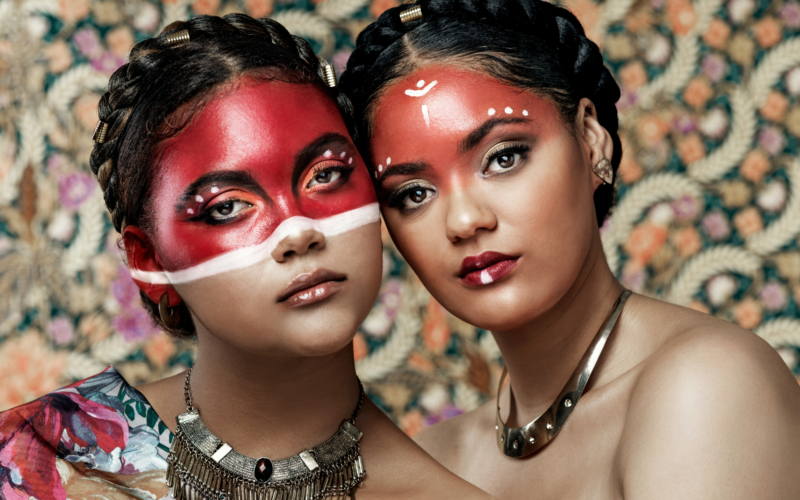Fashion is a powerful form of self-expression, one in which cultures interweave to create diverse styles. In this globalised world, where borders are increasingly porous, fashion borrows and blends from various cultural backgrounds. However, over the years, there’s been a debate on where to draw the line between cultural appropriation and cultural appreciation. Unsurprisingly, attempts by the fashion industry to navigate this thin line have been as delicate as walking a tightrope. This article explores the thin line between cultural appreciation and cultural appropriation in fashion.
But first, What is Cultural Appropriation?
Cultural appropriation occurs when elements of one culture are adopted by members of another culture without understanding, respect, or acknowledgment. One sure thing that comes with cultural appropriation is “disrespect caused by unfair power dynamics”. In the context of fashion, this often manifests as designers or brands borrowing symbols, garments, or styles from a particular culture, divorced from their original meaning or context.
Cultural appropriation in fashion is not merely about borrowing aesthetic elements. It also often involves stripping away the rich cultural history behind them. This act commodifies and commercialises aspects of a culture, turning sacred symbols or traditional garments into trendy accessories. This process erases the identity and significance of the cultural elements, reducing them to mere fashion trends.
One ugly instance of cultural appropriation was when Kim Kardashian’s shapewear line, which she named “Kimono,” faced severe backlash for appropriating the traditional Japanese garment. The choice of the name demonstrated a lack of cultural sensitivity and an ignorance of the garment’s historical and cultural significance. Another instance is the infamous example of the Native American headdress as a fashion accessory at music festivals. The headdress, a sacred symbol in many Native American cultures, was reduced to a trendy accessory.
The Dangers of Cultural Appropriation
One of the primary concerns with cultural appropriation is the potential for cultural erasure. When a cultural element is extracted from its roots and repurposed without proper understanding or representation, it risks perpetuating stereotypes and diminishing the importance of the culture it comes from. This erasure is not only disrespectful, but it also reinforces power imbalances and inequality.
While the dangers of cultural appropriation are clear, it is essential to recognise that cultural exchange and appreciation are fundamental to the evolution of fashion. So how do we navigate the fine line between appropriation and appreciation?
- Education is Key
Before incorporating elements from a different culture in outfits and accessories, designers and brands must invest time in understanding the historical, religious, and social significance of what they wish to incorporate. Education is the foundation of cultural appreciation, ensuring that designers can pay homage to a culture rather than exploit it.
- Collaboration, Not Appropriation
Instead of appropriating, designers can collaborate with artists and artisans from the culture they draw inspiration from. This approach ensures that the original creators are actively involved, instead of just being placed on the moodboards of brands. For instance, Aurora James is doing great work collaborating directly with African artisans to produce shoes and handbags. This way, these artisans can earn a living while preserving their heritage.
- Respecting Intellectual Property
Just as intellectual property rights protect the creations of individuals, cultural elements deserve the same respect. Designers should be aware of the intellectual property associated with cultural symbols, patterns, and designs. Obtaining permission or collaborating with the original creators is a gesture of respect and acknowledgment.
- Diverse Representation
Fashion should represent diversity in its authentic form. Designers and brands should strive for inclusivity by featuring models from various cultural backgrounds, celebrating the beauty of diversity without appropriating it.
- Transparency
When a designer or brand draws inspiration from a specific culture, transparency is important. This goes beyond a mere nod in the credits; it involves actively educating consumers about the cultural significance of the elements incorporated into the designs.
Conclusion
Fashion has the power to bridge cultural gaps, fostering understanding and appreciation. However, this power comes with responsibilities. Designers and brands must be vigilant in their approach, ensuring that they tread carefully on the tightrope between cultural appropriation and appreciation. Ultimately, the key lies in recognising that cultural appreciation is a two-way street that demands respect, understanding, and a genuine desire to learn from one another.
More Like This:
What about the ‘Vintage’ in Wine?











